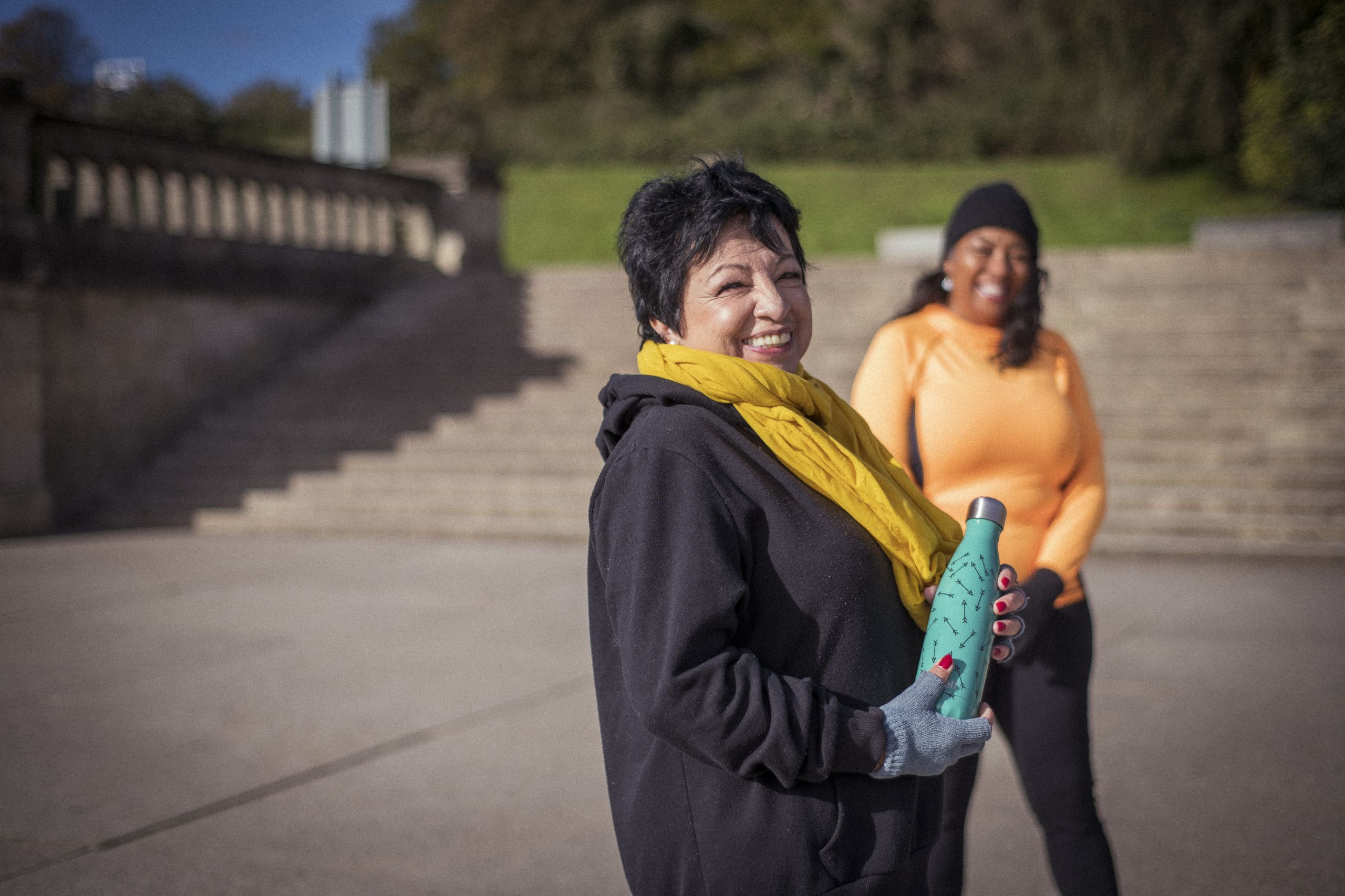Walking and asthma

Walking and asthma
Getting active with asthma
While it’s natural to be cautious about getting more active when you have asthma, experts agree improving your fitness can help manage the condition. And because walking can be enjoyed at low intensity, it’s less likely to be a trigger than other forms of exercise. It’s extremely effective too!
Is it safe to walk with asthma?
Most people with asthma can incorporate walking into their routine without worry. So, with these few precautions, it’s the perfect activity to build your fitness and better your health.
-
Be sure to speak to your doctor or asthma nurse before you increase your activity levels.
-
If you can, walk with someone who knows what to do if you have an asthma attack, especially for your first few walks.
-
Use your reliever-inhaler at least 30 minutes before you set out and always take it with you.
-
Try warming up with gentle exercise to build up your breathing rate slowly.
-
Once walking, try to breathe through your nose, not just your mouth, as nose hairs help warm the air.
-
It’s best to take it easy on cold, dry days - breathing through a fleece or silk scarf can help with the cold air.
-
Pollution is best avoided so try to plan your walks away from busy roads. If pollution is high that day, skip your walk and exercise indoors.
-
Always carry an Asthma Attack Card with you.
Asthma and the benefits of walking
Asthma can be triggered by common illnesses and lifestyle factors, many of which can be prevented or managed by getting more active. That’s why adding regular walks to your routine can reduce your symptoms by increasing your lung capacity, strengthening your immune system, and helping you maintain a healthy weight. Walking is a natural mood booster too, so every step helps keep stress at bay.

Getting started with walking when you’re living with asthma
Walking should always be a pleasure so, if you can, choose warmer days for your first few walks so you don’t need to worry about cold, dry air affecting your airways. Once your confidence grows, you can venture out whenever you feel like it – just be sure to follow the precautions above. Setting a pace that’s comfortable will make it more enjoyable too. Then as your fitness improves, you can increase your speed or perhaps walk further. Building up slowly is the key to making walking a healthy, enjoyable habit.
Take your first steps to being more active, with confidence
If you are new to walking Ramblers Wellbeing Walks are ideal for getting started with walking and staying active, especially when you’re living with a health condition. Our Ramblers Wellbeing Walks are available in England and Wales.
Support from trained walk leaders helps you take those first steps towards being more active. And you’ll be amongst a friendly bunch all walking for their own reasons - whether to ward off illness, manage health conditions or boost wellbeing.
Find your local Ramblers Wellbeing Walk.
You can find out more about keeping active with asthma by visiting Asthma UK.

Walking and epilepsy
Having epilepsy shouldn’t prevent you from going walking. In fact, some people find that when they are active, they are less likely to have seizures.
.jpg?itok=9HneffFG)
Walking and diabetes
Walking helps you take control of your diabetes, safely and effectively. We tell you how, and help you get started, with confidence.

Walking and dementia
Walking is one of the safest ways for people living with dementia to get more active. Our health walks make it easy to get walking safely and are free to join.